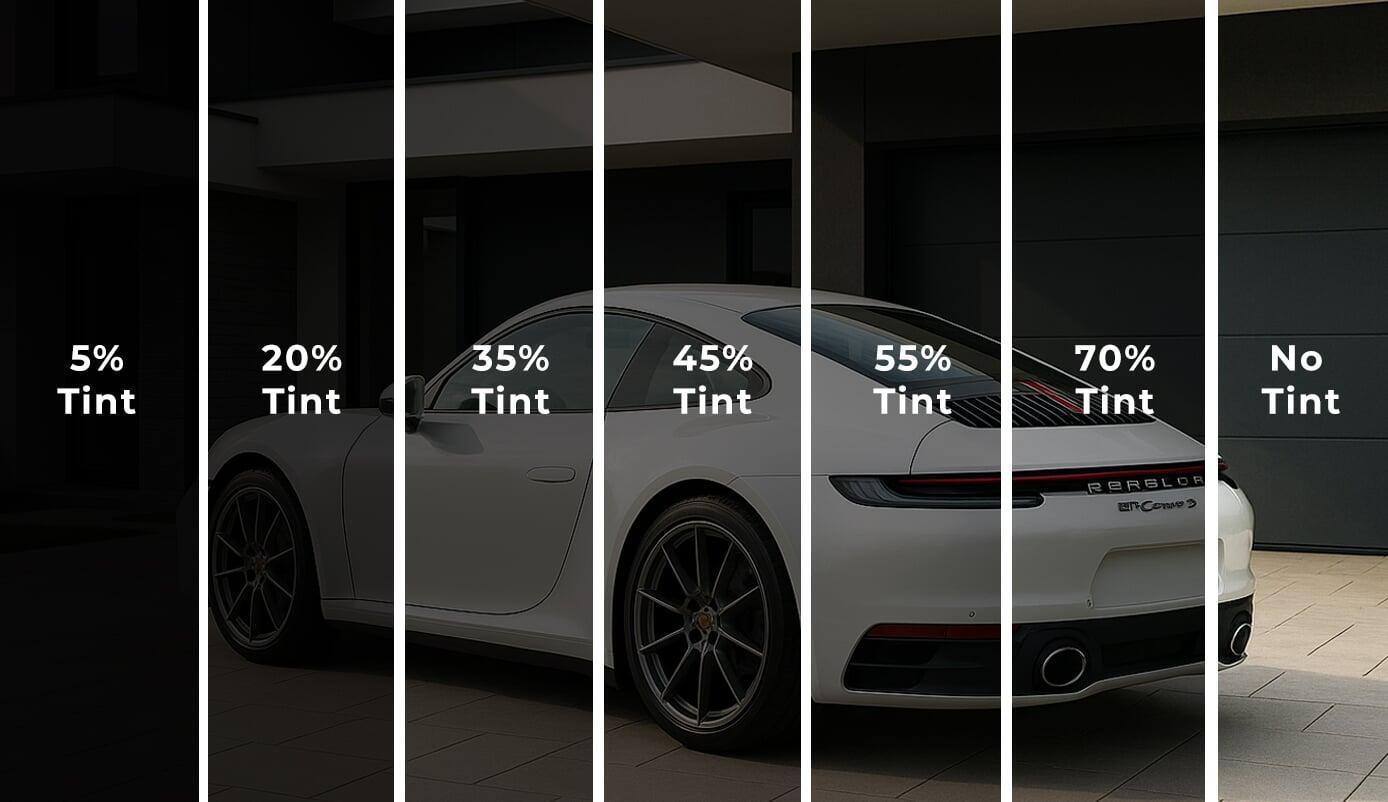Window tint is a thin, multi-layered film applied to the inside of a vehicle or building’s glass. It’s designed to reduce glare, block harmful UV rays, reject heat, and provide privacy. While tinting has become a style statement, it also offers real protection for both passengers and interiors.
The challenge? With so many types of window tint on the market, it can be hard to know which one offers the best balance of performance, looks, and price.
Table of Content:
Why Choose Window Tint? Key Benefits
♦ UV protection - up to 99% reduction in harmful ultraviolet rays
♦ Heat rejection - keeps interiors cooler in hot climates
♦ Privacy & security - darker shades make it harder to see inside
♦ Glare reduction - improves visibility and comfort, especially in bright sunlight
♦ Aesthetic upgrade - gives vehicles a sleek, customized appearance
♦ Interior preservation - prevents fading and cracking of leather, vinyl, and plastic
6 Different Types of Window Tint
Dyed Window Tint
What it is: Dyed tint uses a colored film to absorb solar heat and darken windows.
Pros: Affordable, reduces glare, enhances privacy, wide shade variety.
Cons: Lower heat rejection, can fade or discolor over time, shorter lifespan.
Best for: Budget-minded drivers or those primarily looking for style and privacy.
Cost: $100–$250 per vehicle.
Metalized Window Tint
What it is: Contains metallic particles that reflect heat and UV radiation.
Pros: Strong heat rejection, durable, scratch-resistant.
Cons: Can interfere with electronics (cell signal, GPS, radio), reflective look not always preferred.
Best for: Drivers in hot climates who want effective heat control and durability.
Hybrid Window Tint
What it is: A blend of dyed and metalized layers.
Pros: Balanced performance, good UV and heat rejection, less reflective than pure metalized.
Cons: More expensive than dyed, still may interfere with some electronics.
Best for: Those wanting a compromise between affordability, performance, and appearance.
Carbon Window Tint
What it is: Made with carbon particles for a matte finish and enhanced thermal insulation.
Pros: Excellent UV protection, no fading, sleek non-reflective look, strong insulation.
Cons: Higher price point than dyed or hybrid.
Best for: Style-conscious drivers wanting performance without reflective shine.
Ceramic Window Tint
What it is: Advanced ceramic nanoparticles block infrared light without affecting clarity.
Pros: Best heat rejection, excellent UV protection, crystal-clear visibility, won’t fade, doesn’t block electronics.
Cons: Premium cost.
Best for: Those who want top performance in heat rejection, clarity, and long lifespan.
Crystalline Window Tint
What it is: A high-tech, multi-layer optical film that blocks heat and UV rays without a dark appearance.
Pros: Maximum performance, virtually invisible, keeps vehicles legal in strict states.
Cons: Very expensive, limited availability.
Best for: Drivers who want heat and UV protection without darkened windows.
Comparison Table: Window Tint Types
Type | UV Protection | Heat Rejection | Appearance | Electronics Friendly | Durability |
Dyed | Moderate (~50–80%) | Low (~10–20%) | Various shades, can fade | Yes | 3–5 years |
Metalized | High (~90–99%) | Moderate (~30–50%) | Reflective shine | No | 5–7 years |
Hybrid | High (~90–99%) | Moderate-High (~35–55%) | Less reflective | Limited interference | 5–7 years |
Carbon | Excellent (~99%) | High (~40–60%) | Matte finish, no fade | Yes | 7–10 years |
Ceramic | Excellent (~99%+) | Very High (~50–70%) | Neutral, clear | Yes | 10+ years |
Crystalline | Excellent (~99%+) | Very High (~60–80%) | Virtually clear | Yes | 10+ years |
How to Choose the Right Window Tint
When choosing a tint, consider:
♦ Budget — Dyed and hybrid are the most affordable.
♦ Climate — Hot, sunny regions benefit from ceramic or carbon’s high heat rejection.
♦ Style preferences — Matte (carbon) vs reflective (metalized) vs invisible (crystalline).
♦ Electronics use — Avoid metalized if you rely on GPS, toll tags, or mobile data.
♦ Legal restrictions — Check your state’s laws on Visible Light Transmission (VLT).
Legal Considerations: Tint Laws by State
Each U.S. state has its own regulations on window tint darkness, reflectivity, and windshield coverage. For example:
♦ Texas: 25% VLT allowed on front side windows.
♦ California: 70% VLT required on front side windows.
♦ New York: 70% VLT required on all side windows.
Always check your state’s DMV or Department of Public Safety for up-to-date laws before installation.
Window Tint Maintenance & Care Tips
♦ Wait 2–4 days before rolling down windows after installation.
♦ Clean with ammonia-free products and a soft cloth.
♦ Avoid sharp tools near tinted surfaces.
♦ Inspect edges regularly for peeling or bubbling.
Frequently Asked Questions
Q: What is the best type of window tint for heat rejection?
A: Ceramic and crystalline tints offer the best infrared and UV rejection, keeping interiors significantly cooler.
Q: Which tint lasts the longest?
A: Ceramic and crystalline films last over 10 years with proper care.
Q: Does tint affect phone or GPS signals?
A: Metalized tint may cause interference. Carbon, ceramic, and crystalline tints do not.
Q: What’s the most affordable option?
A: Dyed tint is cheapest, but it may fade and doesn’t block heat as effectively.
Q: Is darker always better?
A: Not necessarily. Darkness (VLT %) doesn’t always equal heat rejection, ceramic and crystalline films can be nearly clear while still blocking significant heat.
Conclusion: Which Window Tint Should You Pick?
If you’re on a budget, dyed or hybrid tint provides style and basic UV protection. For a balance of performance and value, carbon tint is a strong choice. If you want the best technology, long life, and maximum comfort, ceramic or crystalline are premium options worth the investment.
Whatever you choose, make sure to comply with your local tint laws and work with a certified installer for the best resul

